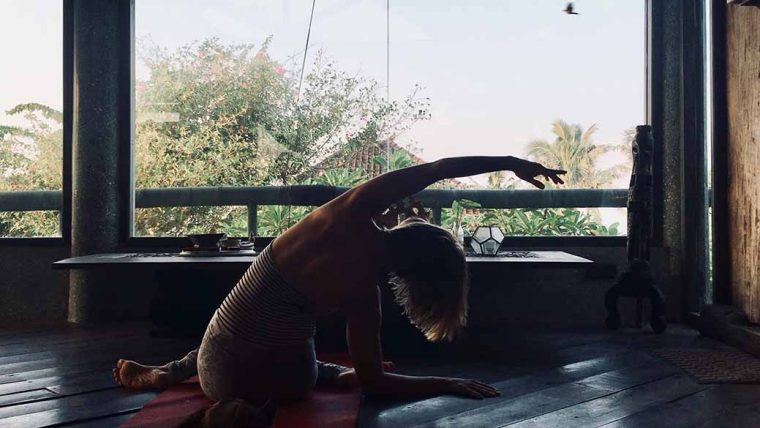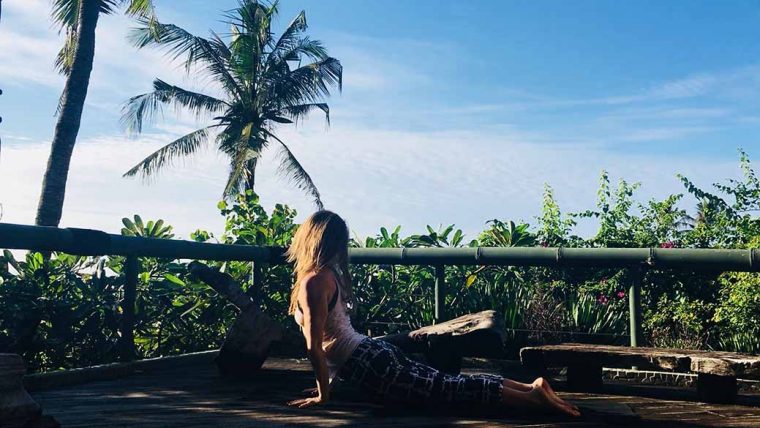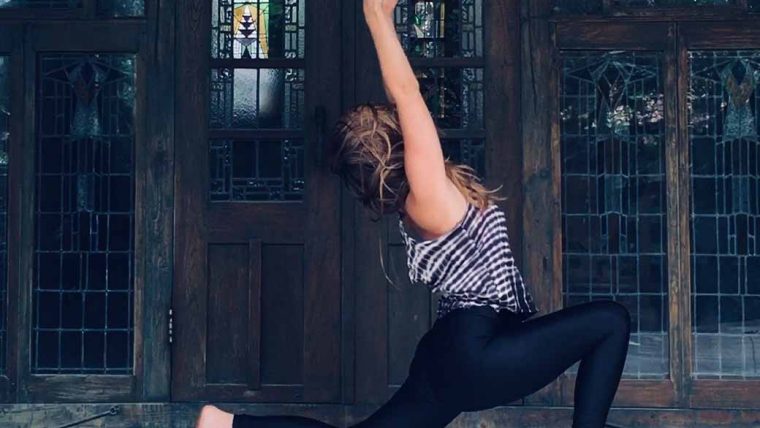5 tips for your yoga at home
Yoga originated in India and was practiced thousands of years ago. Back then, as today, yoga provides a path of practice, both physically and mentally that can increase clarity, strength, subtlety and flexibility. In its essence, the core foundation of yoga is to strengthen the connection to the self as well as the connection to the source of all origins, to the intelligence that creates life.
Today, yoga has evolved and developed in many different directions. This diversity makes it possible to find a yoga style that meets just about every need.
Since yoga is primarily a form of exercise, as with so many things in life, you need consistent practice to gain any benefits. You can easily practice yoga at the comfort of your home or in the studio. Both ways are very different and cannot really be compared with one another. One of my teachers once said to me: ‘You learn in the studio and you practice at home’. If your home is or should be your place for your yoga, then here you will find essential tips for getting started or getting back into your yoga at home.
1. Yoga at home – why?
The first question you could ask yourself before you start rolling out your yoga mat is, in my opinion, super, super important.
Why do you want to practice yoga?
Or why do you want to start yoga again?
A clear answer to this question reflects your motivation. Conscious motivation is essential as it lays down your goal in mind. And this goal makes the path to your mat almost natural after a while. Your motivation makes it clear to you what you get from yoga and what you want from your practice. And it can build the bridge to knowing what happens if you don’t practice your yoga. Simple and often very effective for outsmarting your inner weaker self.
2. When and how much is realistic?
Think carefully about how much time you really have to practice yoga regularly. And when in the day you can most easily create space for this. Maybe it’s 5-10 minutes a day or 60 or 90 minutes once a week. When you get started, regularity is the be-all and end-all. And less is often more. Don’t take on too much, it can quickly backfire and make the intensity become stronger than your motivation. What is particularly easy to reconcile with your everyday life? Choose the simplest option. If you’ve been able to do these easily for at least a month and you really want to, you can of course do more. The emphasis is on can. Don’t have to. If you’re comfortable with what time and space you have for your yoga at home, then stick with it. Progression always comes with consistency over time.
3. Your retreat
Let your creativity run wild and make the place in your home where you want to practice yoga as clear and comfortable as possible. The space doesn’t have to be big. It is often sufficient if you can roll out your mat with a little room to move on all sides. That’s more than enough for a fulfilling practice.
Coziness.
Plants, pictures, candles, smells and music are elements that can give your space coziness and warmth. Feel free to experiment a bit and find out exactly what you need in order to go to your yoga location with a little more well-being.
Depending on which style of yoga you practice, your yoga equipment can also provide comfort. A yoga mat that is either firmer – if you practice standing up a lot. A softer mat, perhaps a blanket – if you practice more sitting or lying down. Pillows, blankets, a yoga strap, or yoga blocks can make some poses more attainable and safe.
Choosing your yoga equipment for your home is very personal and depends on your yoga style. If you know you want to practice regularly, I would recommend purchasing 2 yoga blocks, a non-slip yoga mat, and a yoga strap. 1-2 firmer pillows and a wool blanket are often already available. If not, I would also recommend these two props. If you’re not sure yet whether yoga will really become your home practice, start with what you already have at home and add equipment as your practice evolves.
Clarity.
Create a bit of order and set up your yoga space as clearly as possible. This can mean that you bring your yoga equipment close to you and, if necessary, put away the things that you don’t need for yoga. You could cover screens with a cloth. However, please keep your planning as simple as possible. If you notice that your preparation is causing stress, it’s best to leave everything as it is and simply roll out your mat and start without the stress escalating.
Natural light.
If you want to practice yoga in daylight, set up your yoga space as close to a natural light source as possible. Light stimulates the body’s production of the happiness hormone serotonin. However, if you practice after sunset, please do so in warm light, perhaps just candlelight, so that your body can prepare for rest and sleep.
4. What do you enjoy?
Do the exercises you know and enjoy. If you experience a monthly cycle, your needs may change throughout the month and I would advise you to listen to the changes in your needs.
Not only in terms of WHEN and HOW MUCH but also in terms of WHAT you practice, especially in the beginning, it is important to make it as simple as possible. Do the exercises that bring you joy and above all, a good feeling – especially if you’re someone who finds it challenging to develop a yoga routine at home, which is the case for most of the people, myself included! If your routine is already established or you are a person who finds it easy to create new habits, you can surely challenge yourself and practice the things that you know are good for you, even if they are not necessarily too much fun to do.
5. Own practice or yoga videos?
When doing yoga at home, you can vary your exercises as you wish. I really appreciate this flexibility which doing yoga at home provides.
You can practice all by yourself. Only you, your breath, your feeling, as your own teacher.
Or you can practice with a yoga video.
Or take part in a live online class.
If you practice exclusively with videos or on your own, I would advise you to practice under the eye of a teacher every now and then so that you can ask questions and exchange ideas. To do this, you can either attend a yoga class in a yoga studio or an online live class.
Try my classes!
I teach three different classes. Every week with a new focus. Either via video recording or live with other participants and me in the same room.
Wednesday. flow. Online Vinyasa Yoga. 9 – 10:15 via zoom.
Thursday. unwind. Online Yin Yoga. 8 – 9 via zoom.
Saturday. simple. and. unique. Online Inklusiv Yoga. 10:30 a.m. – 12:30 p.m. via zoom.
***
I hope you are motivated and want to roll out your mat and get started right away!
Or are you wondering whether yoga alone at home is really safe?
As long as you listen carefully to yourself, yoga is ideal for practicing at home.
If you don’t feel safe on your own because you’re new to yoga, or have physical limitations or special needs, then it’s best to try live online yoga or take a yoga class in a studio.
If you have questions related to yoga at home, please reach out!
Love,
Frauke





